An electroscope is given a positive charge, causing its foil leaves to separate. When an object is brought near the top plate of the electroscope, the fiols separated even further. We conclude.
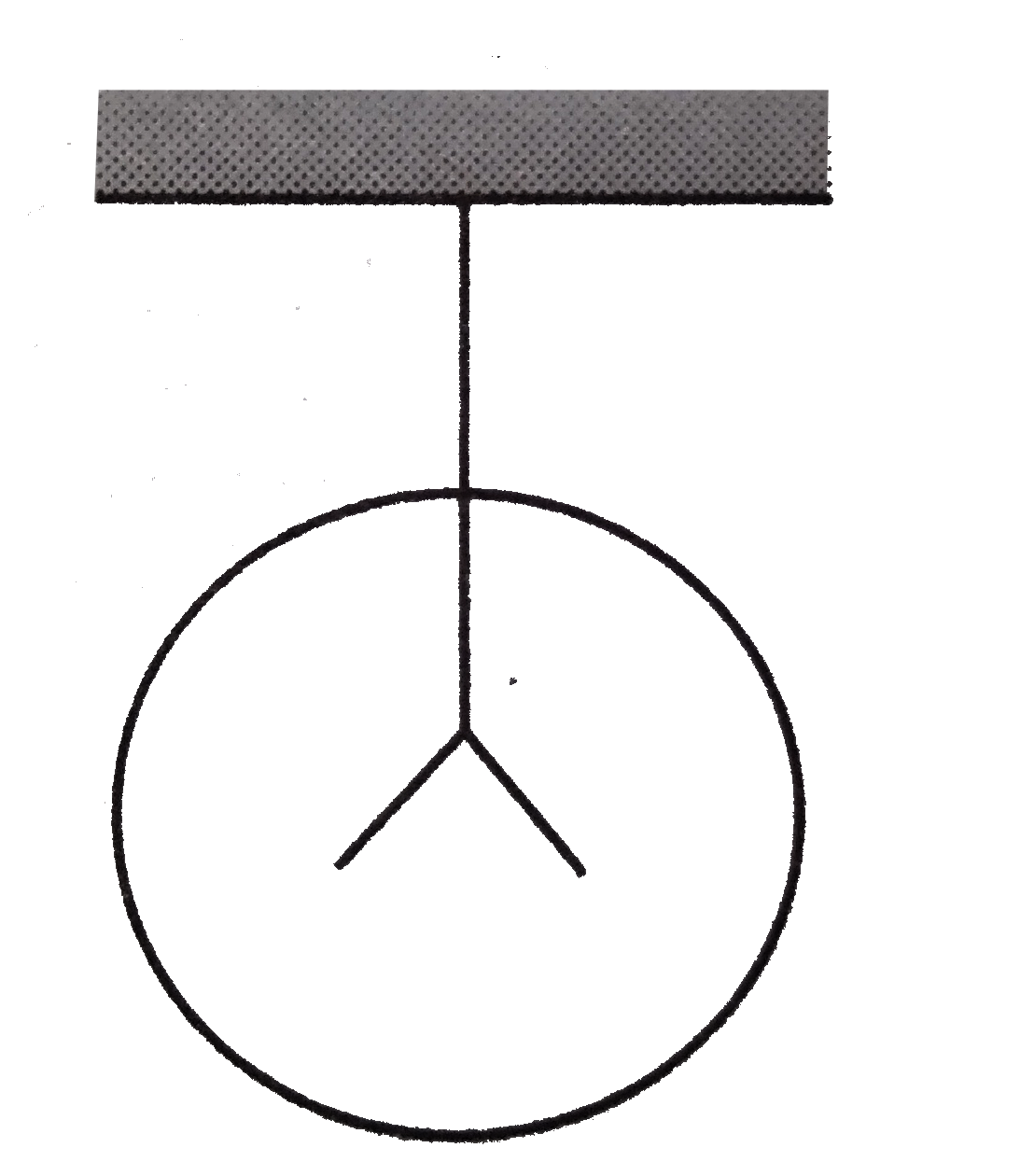
that the object is positively charged
that the object is electrically neutral
that the object is negatively charged
none of these
The correct Answer is:A
The object should be positively charged. Being positively charged, it repelas positive charge from top plate towards leaves causing to separated more.
Topper's Solved these Questions
- BOOK - CENGAGE PHYSICS ENGLISHCHAPTER - COULOMB LAW AND ELECTRIC FIELDEXERCISE - Multiple Correct8videos
COULOMB LAW AND ELECTRIC FIELD
- BOOK - CENGAGE PHYSICS ENGLISHCHAPTER - COULOMB LAW AND ELECTRIC FIELDEXERCISE - Comprehension25videos
COULOMB LAW AND ELECTRIC FIELD
- BOOK - CENGAGE PHYSICS ENGLISHCHAPTER - COULOMB LAW AND ELECTRIC FIELDEXERCISE - Subjective32videos
COULOMB LAW AND ELECTRIC FIELD
- BOOK - CENGAGE PHYSICS ENGLISHCHAPTER - CENGAGE PHYSICS DPPEXERCISE - subjective type51videos
CENGAGE PHYSICS DPP
- BOOK - CENGAGE PHYSICS ENGLISHCHAPTER - ELECTRIC CURRENT & CIRCUITSEXERCISE - Kirchhoff s law and simple circuits15videos
ELECTRIC CURRENT & CIRCUITS
Similar Questions
A positively charged body is brought near to bob of an uncharged gold leaf electroscope , then :
View SolutionWhen a glass rod rubbed with silk is brough near the knob of a positively charged gold leaf electroscope , the gold leaves
View SolutionWhen a negatively charged ebonite rod is brought close to an uncharged electroscope, the leaves of the electroscope develop positive charge and diverge.
View SolutionTwo parallel conducting plates, each of area A, are separated by a distance d. Now, the left plate is given a positive charge Q. A positive charge q of mass m is released from a point near the left plate. Find the time taken by the charge to reach the right plate.
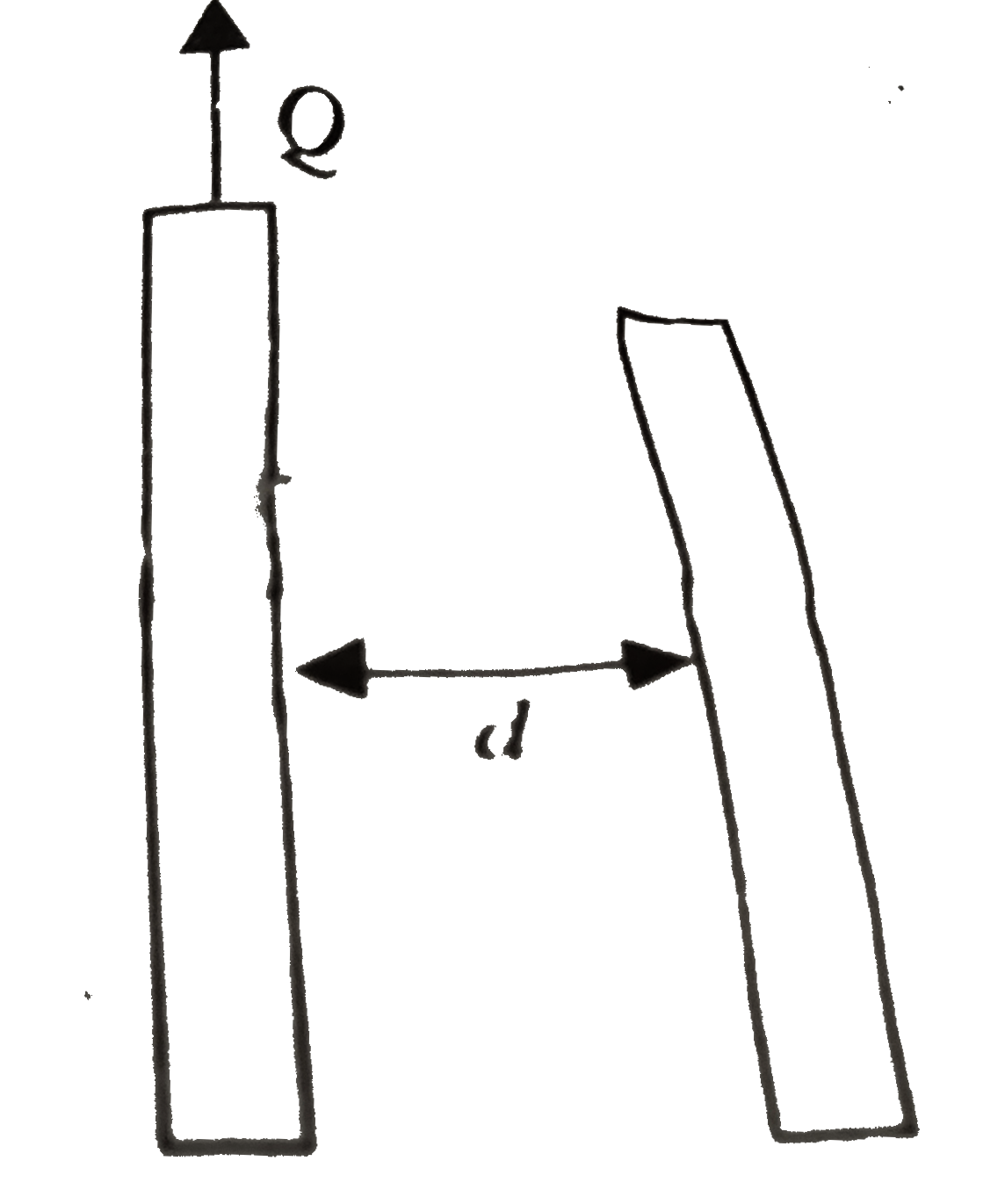 View Solution
View SolutionWhat will happen to the leaves of an electroscope if a positively charged body is brought near
(a) An uncharged electroscope ?
(b) A positively charged electroscope ?
( c ) A negatively charged electroscope ?View SolutionWhen a negative charged rod is brought near, but does not touch, the initially unchanged electroscope shown below, the leaves spring apart (I). When the electroscope is then touched with a finger, the leaves collapse (II). When next the finger and finally the rod are removed, the leaves spring apart a second time (III). The charge on the leaves is
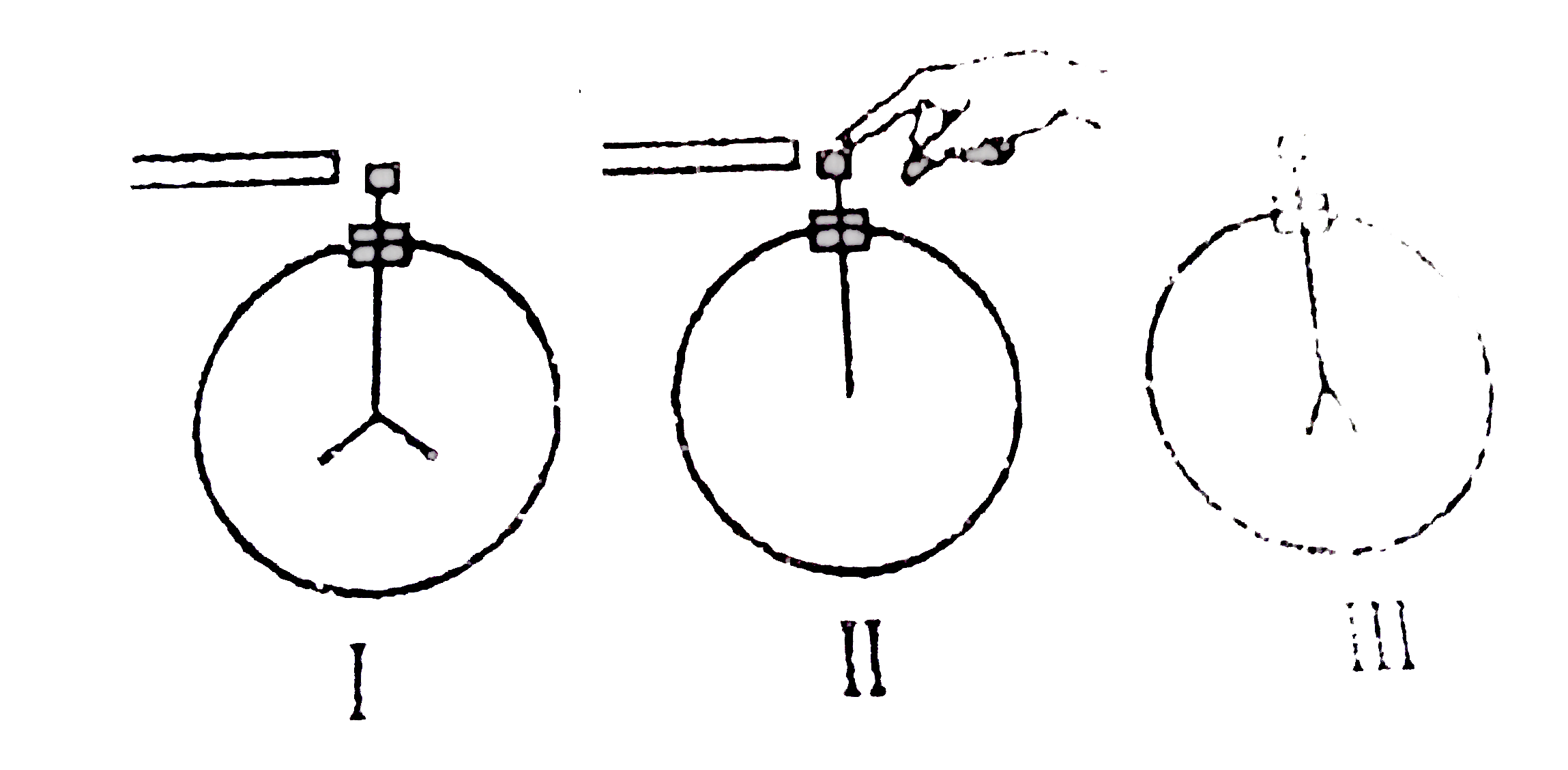 View Solution
View SolutionA leaf electroscope is a simple apparatus to detect any charge on a body. It consist of two metal leaves OA and OB, free to rotate about O. Initially both are very slighty separted. When a charged object is touched to the metal knob at the top of the conduction re, charge flows from knob to the top of the conduction rod, charge flows from knob to the leaves through the conducting rod, charge flows from knob to the leaves through the conduction rod. As the leaves are now charged similarly, they start repelling each other and tet separted (deflected by certain angle).
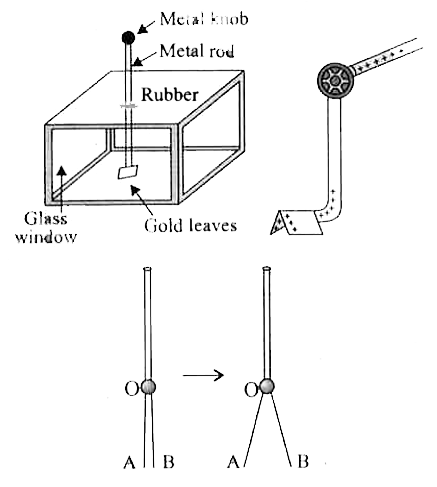
The angle of deflection in static equilibrium is an indicator of the amount of charge on the charged boy.
If we perform these steps one by one.
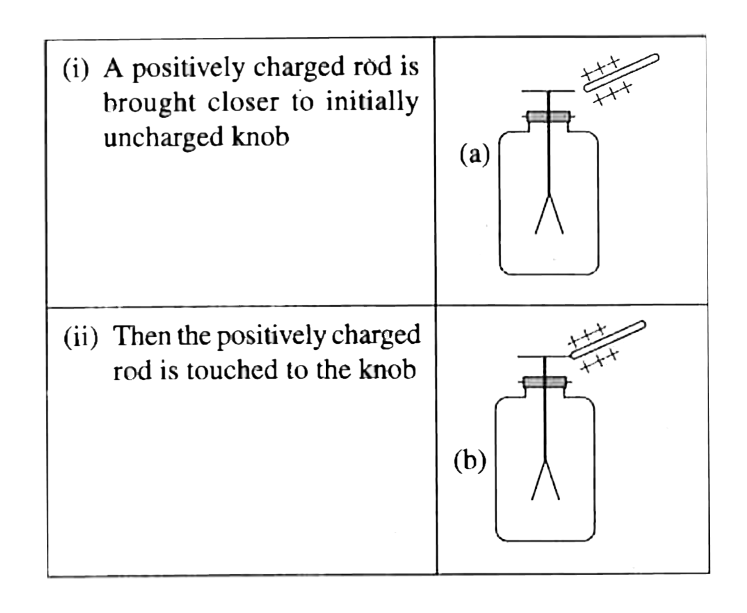
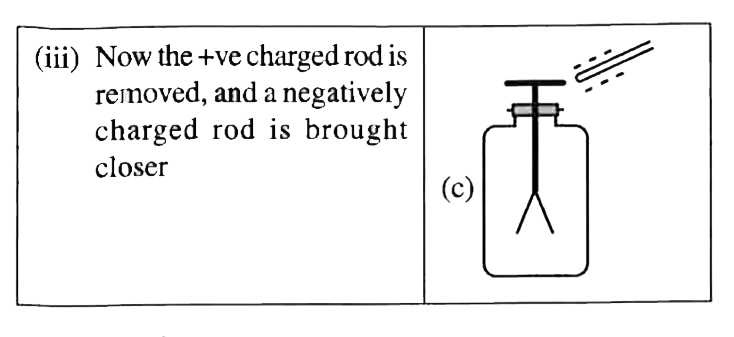
In which case, the leaves will converge (come closer), as compared to the previous state?View SolutionA leaf electroscope is a simple apparatus to detect any charge on a body. It consist of two metal leaves OA and OB, free to rotate about O. Initially both are very slighty separted. When a charged object is touched to the metal knob at the top of the conduction re, charge flows from knob to the top of the conduction rod, charge flows from knob to the leaves through the conducting rod, charge flows from knob to the leaves through the conduction rod. As the leaves are now charged similarly, they start repelling each other and tet separted (deflected by certain angle).

The angle of deflection in static equilibrium is an indicator of the amount of charge on the charged boy.
When a+20C rod is touched to the knob, the deflection of leaves was 5∘, and when an identical rod of −40C is touched, the deflection was found to be 9∘. If an identical rod of +30C is touched, then the deflection may be:View Solutiontwo pith balls each with mass m are suspended from insulating threads. When the pith balls are given equal positive charge Q, they hang in equilibirum as shown. We now increase the charge on the left pith ball from Q to 2Q while leaving its mass essentially unchanged. Which of he following diagrams best represent the new equilibrium configuration?
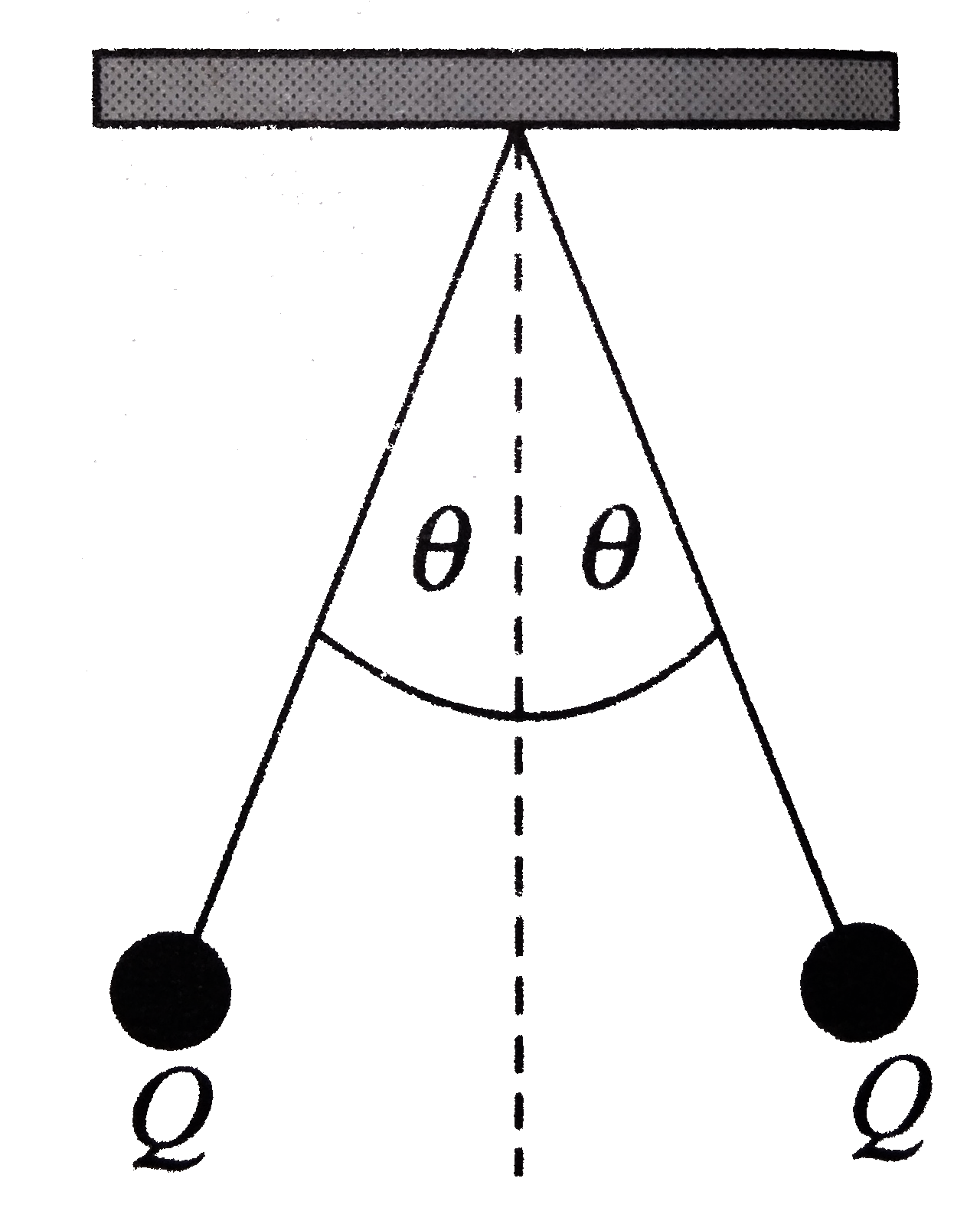 View Solution
View SolutionWater in a bucket is whirled in a vertical circle with a string attatched to it. The water does not fll down even when thebucket is inverted at the top of its path. We conclude that in this position
View Solution
